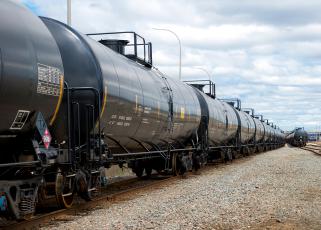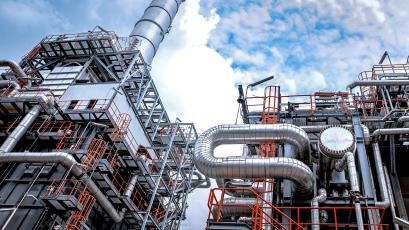AFPM: Latest rail merger application raises the stakes for STB to restore and enhance competition in freight rail
WASHINGTON, D.C. — American Fuel & Petrochemical Manufacturers (AFPM) President and CEO Chet Thompson issued the following statement on the official filing of the latest Class 1 freight rail merger application with the Surface Transportation Board (STB).
AFPM: SPEED Act will help more Americans benefit from connectivity to fuels, energy
WASHINGTON, D.C. — American Fuel & Petrochemical Manufacturers (AFPM) President and CEO Chet Thompson issued the following statement on H.R. 4776, the Standardizing Permitting & Expediting Economic Development (SPEED) Act, up for consideration this week in the House of Representatives.
AFPM on PERMIT Act: “Only fitting for the world’s energy superpower to also have the most advanced energy infrastructure”
WASHINGTON, D.C. — American Fuel & Petrochemical Manufacturers (AFPM) President and CEO Chet Thompson issued the following statement on H.R. 3898, the Promoting Efficient Review for Modern Infrastructure Today (PERMIT) Act, up for consideration this week in the House of Representatives.
AFPM: Revised fuel economy standards would put CAFE back on solid legal footing
WASHINGTON, D.C. — American Fuel & Petrochemical Manufacturers (AFPM) President and CEO Chet Thompson issued the following statement on the Trump administration’s proposed revised 2027-2031 Corporate Average Fuel Economy (CAFE) Standards.
AFPM: REFINER Act spotlights liquid fuels, downstream energy manufacturing as a national security asset
Washington, D.C. — American Fuel & Petrochemical Manufacturers (AFPM) President and CEO Chet Thompson issued the following statement today on the Researching Efficient Federal Improvements for Necessary Energy Refining (REFINER) Act (H.R. 3109), which is set for a vote in the House of Representatives.
AFPM: The only lawful, acceptable number for RFS reallocation is zero
EPA’s RFS reallocation proposal could raise Americans’ 2026-2027 RFS bill to $150 billion, but if soybean oil prices jump significantly, total costs could reach $190 billion.
AFPM: EPA reallocation proposal is a multi-billion-dollar addendum to a $70 billion RFS
WASHINGTON, D.C. — American Fuel & Petrochemical Manufacturers (AFPM) President and CEO Chet Thompson today issued the following statement on EPA’s announcement of a supplemental proposal to reallocate regulatory obligations from past and future years as part of the 2026-2027 Renewable Fuel Standard.
AFPM and Rail Customer Coalition urge STB to protect freight rail competition amid further consolidation
WASHINGTON, D.C. — The American Fuel & Petrochemical Manufacturers (AFPM) today joined nearly 30 stakeholders across manufacturing, agricultural and energy industries to urge the Surface Transportation Board (STB) to take meaningful action to restore and promote competition in the U.S. freight rail network in the wake of a proposed merger between Union Pacific and Norfolk Southern.
RFS costs part II: Would you pay $770 for an extra gallon of corn ethanol?
Pay close attention as we continue diving into Renewable Fuel Standard (RFS) costs, because $770 per gallon is what the Environmental Protection Agency (EPA) is considering having you pay next year for every extra gallon of corn ethanol that might get blended BECAUSE of the RFS.









